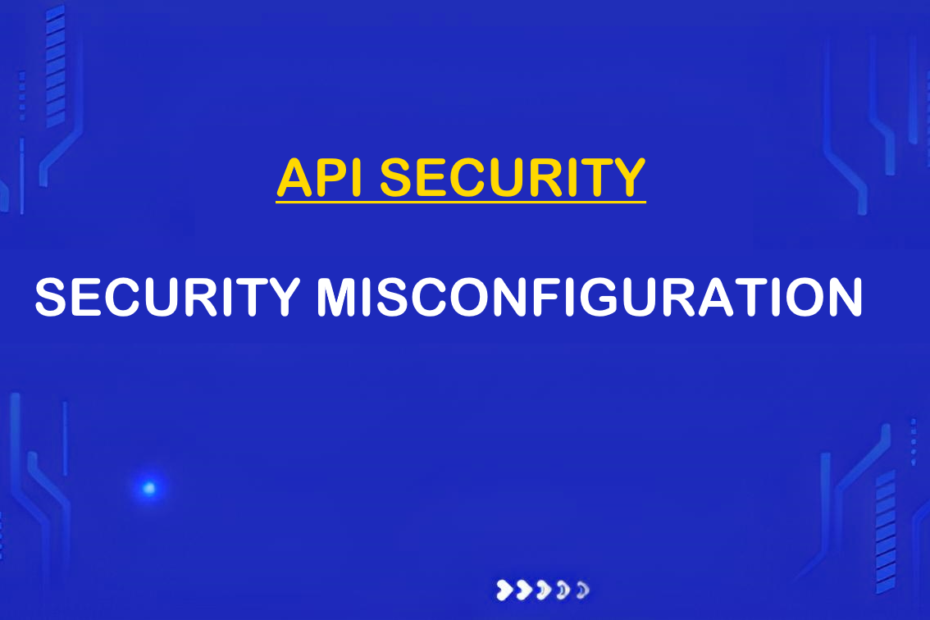Introduction:
APIs play a vital role in modern software development, enabling communication between different systems and facilitating seamless integration. However, the improper configuration of API security settings can expose sensitive data and introduce vulnerabilities. In this blog, we will delve into API8:2023 Security Misconfiguration, explore its implications, and provide a step-by-step guide on how to test, perform, and exploit this security misconfiguration using Postman and Burp Suite.

Understanding API8:2023 Security Misconfiguration:
API8:2023 Safety Misconfiguration is a security risk identified by OWASP as one of the top API security threats. It happens when an API is configured insecurely, such as by utilising unsafe authentication techniques, granting excessive permissions, or leaving default settings alone. This error might result in unauthorised access, data leakage, or even system compromise.
Step 1: Locate the API Endpoint
The first step is to determine the target API endpoint for security misconfiguration testing. Consider the following e-commerce API endpoint: https://api.example.com/products for this example.
Step 2: Use Postman to investigate the API.
Begin investigating the API with Postman by submitting various requests and reviewing the results. Look for any irregularities, such as error messages that divulge sensitive information, unusual headers, or unauthenticated access to restricted resources. Any suspicious discoveries should be documented for further examination.
Step 3: Use Burp Suite to intercept traffic.
Use Burp Suite to proxy your browser and capture API traffic. We can keep track of and analyze the requests and answers your client sends to your API server.
Step 4: Examine the Captured Requests and Responses
Using Burp Suite’s proxy interface, examine the captured requests and responses. Keep track of the HTTP headers, cookies, and arguments in the requests. Look for any misconfigurations, such as insufficient authentication protocols, missing or weak encryption, or poorly handled error answers.
Step 5: Test for Common Misconfigurations
Now that you’ve got a good idea of how the API works and you’ve looked at all the traffic you’ve captured, let’s test it for some common mistakes. Here’s what to look for:
- Authentication and authorization: Make sure the API has strong security measures in place. Look for weak passwords, weak session management, hardcoded credentials, etc.
- Input validation: Test if the API is properly validating and sanitizing your data. Try sending in unexpected or distorted input to see if there are any vulnerabilities, like SQL injections or XSS.
- Error handling: Check how the API deals with errors and exceptions, and make sure it doesn’t expose sensitive info or stack traces that could help attackers do their research.
Step 6: Exploiting Security Misconfigurations
Once we have identified a security misconfiguration, carefully plan your exploitation strategy. Depending on the vulnerability, you might attempt actions such as bypassing authentication, gaining unauthorized access to sensitive resources, or exploiting improper error handling to leak data.
Ensure you have appropriate authorization and permissions to conduct these tests within a controlled environment. Always obtain proper authorization from the system owner before proceeding with any exploitation attempts.
Conclusion:
API security misconfigurations can have serious ramifications for businesses, resulting in data breaches and compromised systems. Security experts may efficiently test, discover, and attack misconfigurations to assist organisations increase their API security by understanding the ramifications of the “API8:2023 Security Misconfiguration” vulnerability and utilising tools like Postman and Burp Suite.
Citations:
https://owasp.org/API-Security/editions/2023/en/0xa8-security-misconfiguration/
https://salt.security/blog/api8-2023-security-misconfiguration
For further clarifications or support, please write to contact@paradigmitcyber.com
